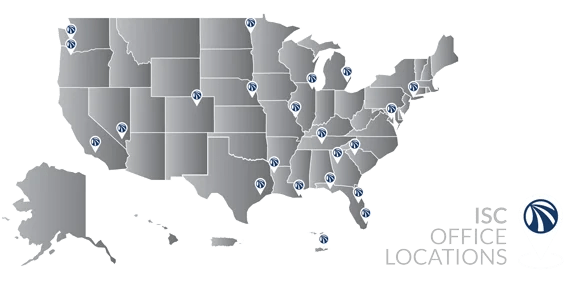INNOVATIONS, IDEAS, & INSIGHTS
About the Blog
ISC experts share their thoughts on current innovation, insights, and thought leadership on important industry topics and corporate responsibility.
Archives
Categories
The Importance of Documenting a Recovery Process
2/5/2020

By Timothy Bell
The Importance of Documenting a Recovery Process
2/5/2020
About the Blog

By Timothy Bell
Imagine, a massive disaster recovery environment. It’s two years out from the actual disaster, and pressure is mounting to “get things done” to receive disaster recovery funding and progress with the community disaster recovery process. To this point, only the FEMA Public Assistance Category A (debris removal) & Category B (emergency protective measures) eligible expenditures have been accounted for and obligated. Normally this type of work should be wrapped up completely within a few months, and what we call “Permanent Work” (Categories C-G) ...
to do actual repairs, restoration, replacement, and mitigation measures would be well under way. In this situation, however, very few permanent works projects have begun after over two years and the disaster recovery specialists are feeling the pressure to get things going.
ISC experts share their thoughts on current innovation, insights, and thought leadership on important industry topics and corporate responsibility.
Why? That is the multi-billion-dollar question. And the answer, to a large extent, is a lack of documented processes. You see, there are some common threads that have run through all national level disaster recovery efforts through the years:
- Chaos – It’s a disaster. Expect chaos, then organized chaos, then the rhythm of a recovery effort. Priorities and daily tasks can change quickly due to many factors, out of most everyone’s control.
- Staff Turnover – Expect turnover of staff. Per the nature of a temporary assignment, being to fix things and leave, this is to be expected. FEMA employee assignments can range from a week or two up to a year, but most positions of leadership of any kind are very short. New orders from the new leadership are blindly put in place because the new leader sees no documentation showing how things are currently being done. This usually results in a slow-down or even a freeze on operations.
- Every disaster is unique – Anyone that has been involved with more than one recovery effort will tell you, it’s different every time. Circumstances on the ground sometimes require different methods of achieving recovery, within the guidelines of FEMA’s Public Assistance Program and Policy Guide (PAPPG).
The solution. Utilizing the Six Sigma DMAIC (Define, Measure, Analyze, Improve and Control) process, the analysis revealed a severe lack of documented processes. Through analyzing the processes currently in place (Define, Measure and Analyze), we find ways to Improve and document the processes. Here’s how documenting the processes impacts the recovery operation:

- Manage the Chaos – When the troops hit the ground, meaning the recovery team setting up operations, they have detailed written processes for every step in every possible action based on previous experience. Having these processes as a baseline gives a logical step-by-step way forward. Thus, chaos is drastically reduced.
- Retain Knowledge – Turnover in disaster recovery teams is unavoidable. When a new leader knows the operation has written, leadership approved processes in place, he/she must have those documents changed and approved in order to put the new ideas in place. This is a major plus, in two ways; first, it provides the new leader a view of exactly how things are being done, so they can lend their knowledge to improving them. Second, it also allows the rank-and-file team doing the work to continue working using existing processes until the new processes are approved. The whole team has transparency with the processes and the improvement of them. This creates a bridge between the outgoing and incoming leadership and helps with a smoother transition.
- Document the Process – Having detailed process documentation allows us to quickly begin recovery operations using proven processes, and more effectively assist recovery in alignment with FEMA’s PAPPG. The DMAIC process is a proven way to gain a familiar control of any situation quickly.
Using this world-renowned Six Sigma process improvement methodology, we can quickly bring any problem under control and improve any process. We’ll continue to discuss process improvement in this series, and hopefully you’ll find these tips useful in your everyday work.
About Tim:
Tim is a Disaster Planning and Recovery operations and technology innovator for Integrated Solutions Consulting. He recently supported Puerto Rico’s Hurricane Maria disaster recovery operations in developing and implementing operational improvements with FEMA’s Public Assistance Program and the processing of billions of dollars in disaster recovery projects.

